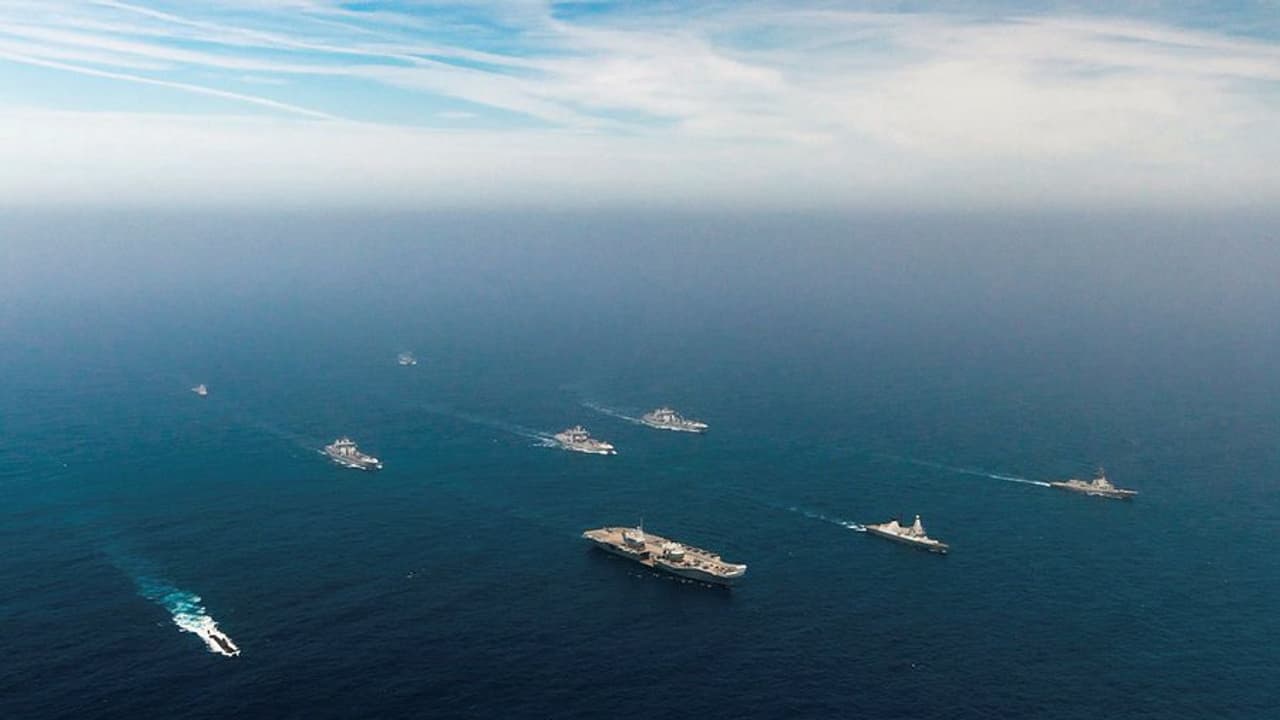Indian Navy and the Royal Navy began their biennial Exercise Konkan in Western Indian Ocean on October 5, marking the first-ever participation of carrier strike groups from both nations. The exercise will enhance joint maritime and air capabilities.
New Delhi: Indian Navy and the Royal Navy kicked off their biennial exercise Konkan in the Western Indian Ocean region on October 5, wherein for the first time carrier strike groups from both sides are participating. From the United Kingdom, the carrier strike group (CSG) is being led by HMS Prince of Wales aircraft carrier while the INS Vikrant is leading from the Indian side.
Scroll to load tweet…
Exercise Konkan to boost maritime security
Aimed at increasing joint naval and air capabilities between the two navies on the high seas, Exercise Konkan will also focus personnel exhibited on op-readiness, enhancing interoperability to further strengthen the maritime security and uphold a rules-based order in the region.
The biennial exercise, began since 2004, “marks the first time in history that a British and Indian Carrier Strike Group will conduct a maritime exercise together,’ an official said.
An official from Indian High Commission in Delhi said that the UK CSG, currently on an eight-month deployment known as Operation Highmast, linked up with the Indian Navy’s Carrier Strike Group, led by INS Vikrant to begin 4 days of complex maritime exercises that will also involve submarines and various aircraft from both the forces.
After the completion of the exercise, CSG ships will visit ports in Mumbai and Goa to celebrate enhanced military interactions with India and ‘showcase the best of British trade and industry and highlight the strong ‘living bridge’ of people and culture between the UK and India’.
British High Commissioner on defence and security
Lindy Cameron, British High Commissioner to India said: “The UK and India believe in an Indo-Pacific that is free and open. We share an ambition for a modern defence and security partnership, a fundamental pillar of UK-India Vision 2035, agreed by our Prime Ministers this year.”
“The engagements between the Carrier Strike Groups of our two navies demonstrate our commitment to maintaining the rules-based international order in the region and lay the groundwork for future cooperation,” he said.
Commodore Chris Saunders MBE Royal Navy, Defence Adviser, British High Commission said: “Exercise Konkan provides an excellent opportunity for the Royal Navy to train in the delivery of complex multi-domain operations alongside India as partners in the Indo-Pacific region.”
“The UK and India are two carrier operating countries, and the Royal Navy and Indian Navy are in a fairly exclusive club as blue-water, multi-carrier navies. This exercise provides another opportunity, a first with both carriers, for two maritime powers to enhance combined capability operating and share best practice.”
“The UK is also proud to co-lead the Maritime Security Pillar of India’s Indo-Pacific Oceans Initiative.”
Commodore James Blackmore, Commander, UK Carrier Strike Group said: “It’s fantastic to work again with the Indian Navy during Exercise Konkan to develop our combined operational capabilities.”
“We’ve been collaborating to expand our defence capability, in support of the rules-based international system in the Indo-Pacific.”
On completion of the port visit, the UK CSG will participate in an aerial defence exercise with the Indian Air Force, allowing both the forces to test their tactics and share best practices.
The UK CSG is formed around HMS Prince of Wales, the 65,000 tonnes Queen Elizabeth Class Aircraft Carrier – the largest surface vessel ever constructed in the UK.
She is supported by a Type 45 Destroyer HMS Dauntless, a Type 23 Frigate – HMS Richmond, and Royal Fleet Auxiliary Support Ships and ships of allies and partners.
The CSG operates F-35B Lightning aircraft, and Merlin and Wildcat helicopters, as standard.
In June, the Indian Navy and the Royal Navy conducted conducted maritime exercise which saw participation of the UK CSG and Indian Navy’s INS TABAR, a P8-I Neptune aircraft and an Indian submarine.
